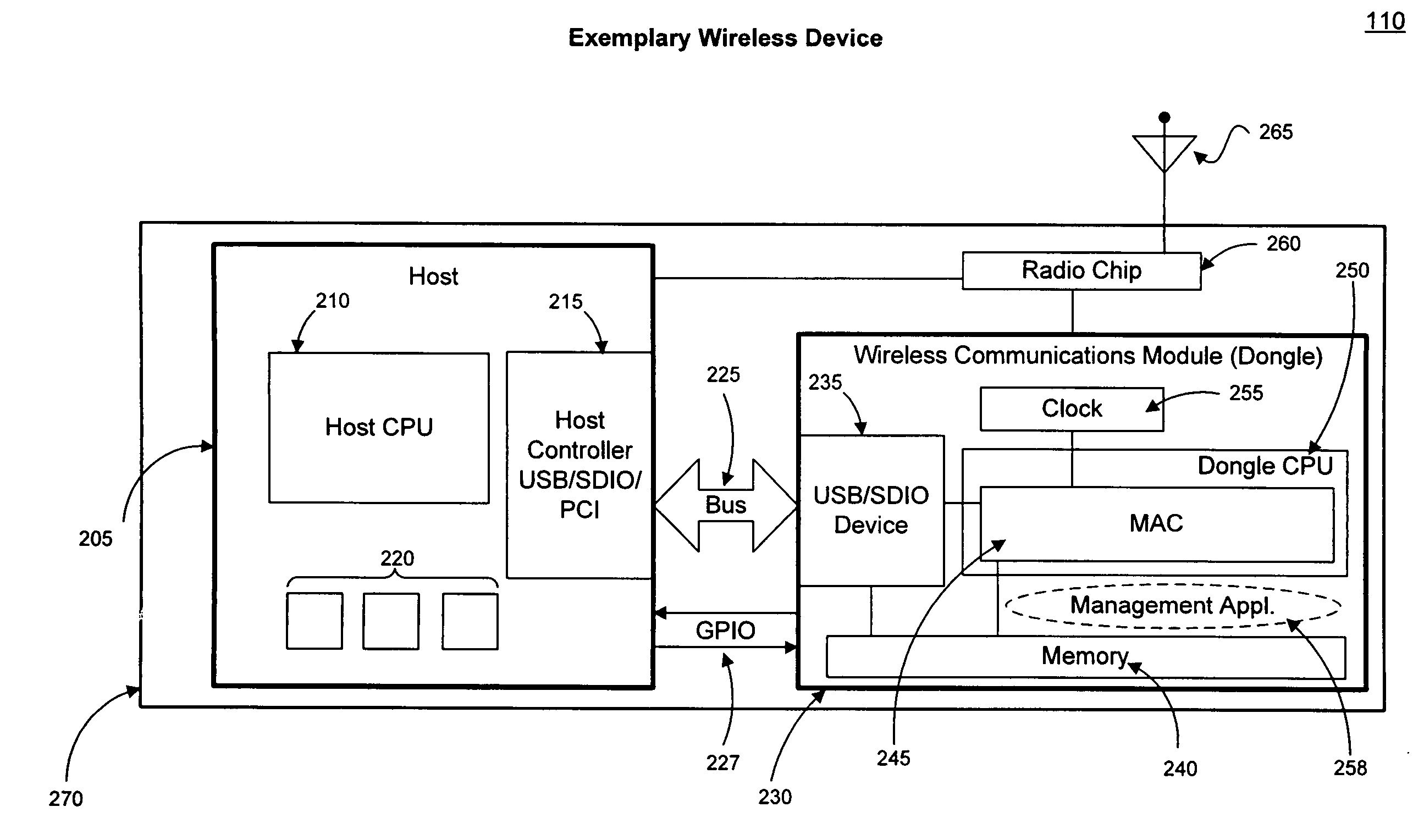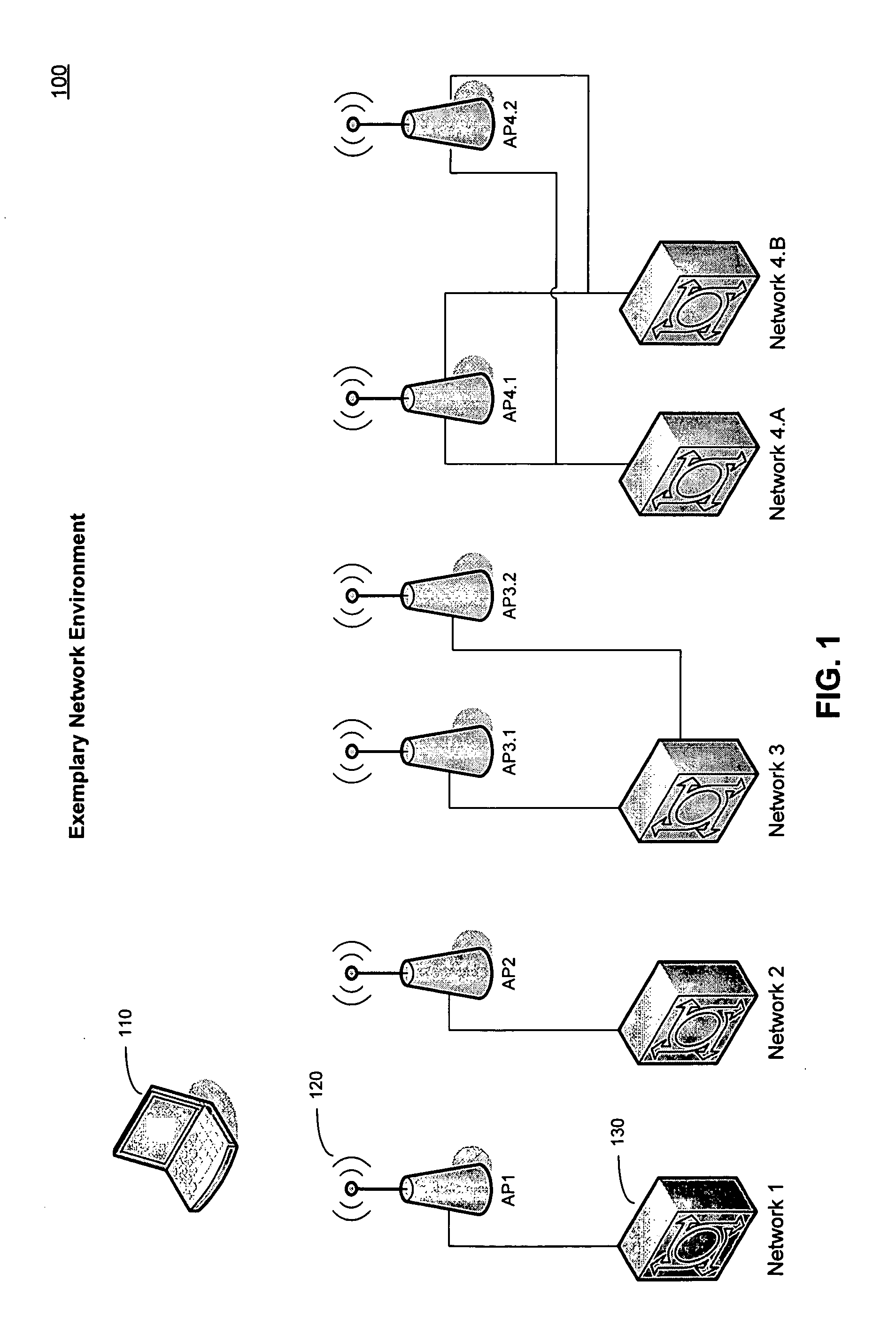Delegated network connection management and power management in a wireless device
- Summary
- Abstract
- Description
- Claims
- Application Information
AI Technical Summary
Benefits of technology
Problems solved by technology
Method used
Image
Examples
first embodiment
[0096]As discussed above, step 330 determines whether a communications task is to be repeated. If the determination is that no repetition is needed, then step 330 continues with step 360 of power management. If in step 330, if it is determined that repetition is needed, then in a first embodiment step 330 continues with step 335 (related to task frequency, as discussed above), and does not continue with step 360.
[0097]In an alternative embodiment, even if at step 330 it is determined that repetition of the communications task is required (entailing a continuation to step 335), step 330 may also continue with step 360 of dongle power management. Following step 330, step 360 of dongle power management may be performed before step 335, or step 360 may be performed substantially concurrently with step 335, or step 360 may be performed after step 335.
[0098]In one embodiment of the present system and method, step 335 of determining whether to adjust task repetition frequency, and possibly...
embodiment 700
[0174]According to further embodiments of the present invention, the management application at wireless communications module 230 enables an adaptive scanning algorithm, which may enables wireless system 110 to conserve energy. In a scanning algorithm embodiment 700, illustrated in FIG. 7, adaptive scanning algorithm 700 includes performing directed network scans according to adaptively variable frequencies. (The term “frequency”, as used in the present context, refers to a “frequency in time” of performing a step or action pertaining to network scanning, and not “frequency” as a “measure of repetitions of cycles of a radio wave”.)
[0175]For example, as shown in FIG. 7, network scanning may begin by performing a directed network scan, which may entail sending out a probe 725 and scanning for a network response 735. If no network response is received, the probe / scan activity 725 / 735 may be repeated after a time interval T1 has elapsed from the first probe / scan 725 / 735. If no response ...
PUM
 Login to View More
Login to View More Abstract
Description
Claims
Application Information
 Login to View More
Login to View More - R&D
- Intellectual Property
- Life Sciences
- Materials
- Tech Scout
- Unparalleled Data Quality
- Higher Quality Content
- 60% Fewer Hallucinations
Browse by: Latest US Patents, China's latest patents, Technical Efficacy Thesaurus, Application Domain, Technology Topic, Popular Technical Reports.
© 2025 PatSnap. All rights reserved.Legal|Privacy policy|Modern Slavery Act Transparency Statement|Sitemap|About US| Contact US: help@patsnap.com



